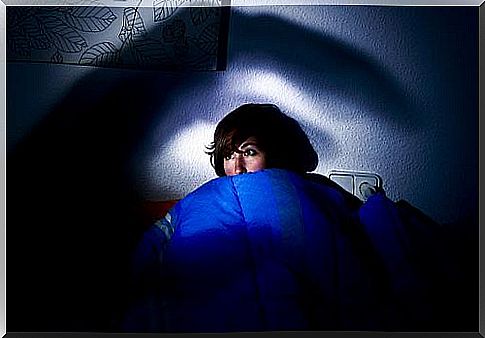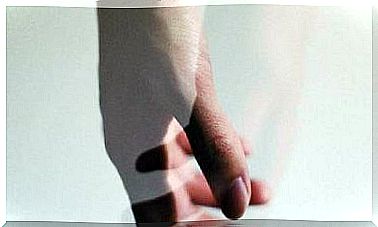The Agonizing And Harmless Sleep Paralysis

Sleep paralysis is an experience that usually comes with a good deal of anguish. It happens mainly when we are asleep and waking up, and it is characterized by the inability to move or speak, despite being aware of our surroundings. In addition, it is often accompanied by acoustic hallucinations, such as hearing footsteps approaching us and having an intense sense of presence.
Despite the unpleasant and threatening nature of the episode, it is completely harmless and can happen to anyone without being a sign of any pathology or illness. It is associated with states of anxiety or stress. The hypothesis for the appearance of sleep paralysis is to remain in the REM state when we are returning to wakefulness, so that some of the characteristics of both states are mixed.

It lasts between one and three minutes, and although we cannot voluntarily move any muscle, the respiratory muscles continue to function automatically. Sleep paralysis falls within the group of parasomnias and is associated with narcolepsy.
Forms of sleep paralysis
There are three types of sleep paralysis:
- Isolated shape. This can appear in healthy individuals who are suffering from a lot of stress, who have experienced changes in time zones, who experience anxiety or lack of sleep. It is likely that the person experiencing it in isolation will never experience it again. This form does not require visiting a professional for help,
- Familiar way. In some cases, these episodes are repeated over time, although they are not accompanied by any additional symptoms and, in addition, it happens to several family members. There are few familiar cases.
- Associated with another pathology. Diseases such as narcolepsy may be accompanied by episodes of sleep paralysis.
Characteristics of REM sleep and sleep paralysis
During sleep there are different phases among which is the REM state, which comes from its acronym in English: Rapid Eye Movement. This sleep phase begins approximately 70-100 minutes after sleep and is characterized as the phase in which dreams appear. It repeats between 4 and 5 times throughout the night.
At the moment we dream, the body takes some steps so that it is not dangerous. The muscles in our body are paralyzed so that we are not in danger. While dreaming, we may be running away from something or making movements that, if we were to reproduce in our sleep, could put us in danger. In addition, high brain activity is observed.
When we wake up paralyzed, it means that our brain is still in the REM state and, despite being able to open our eyes, we still can’t move. Furthermore, dreams mix with reality, giving rise to hallucinations that, although at the moment seem totally real, are nothing more than dream material merging with reality.
Hypnagogic and Hypnopompic Hallucinations
If the impossibility of moving an inch were not terrifying enough, the experience becomes more unpleasant when accompanied by hallucinations. Auditory and visual hallucinations are common. These tend to have a threatening character. It is common to hear approaching footsteps or see a silhouette inside the room.
There is also a strong sense of presence, as if someone is nearby. Sometimes you also feel that someone touches you or presses on your chest, making it difficult to breathe. There are two types of hallucinations that can occur during sleep paralysis, depending on whether they occur while we sleep (hypnagogic) or when we wake up (hypnopompic).

It is important to be clear that these hallucinations are not indicative of any kind of disorder that should concern us, as it is nothing more than a prolongation of sleep during wakefulness, and can happen to anyone. Unless it’s accompanied by excessive daytime sleepiness, cataplexy, or other symptoms, there’s nothing to worry about.
Advice to avoid its appearance
It is not a dangerous episode nor is there any risk that something bad will happen to us, so the best thing is to try to relax, be aware that nothing will happen and that everything will only last a few minutes, as there is little you can do to get out of that state. What you can do is keep in mind some tips that make your appearance more unlikely.
Since one of the main causes is stress, one of the goals is to reduce it before we go to bed. Physical activity, relaxation exercises, trying to get enough sleep, and maintaining good sleep hygiene are fundamental habits.
Understanding our brain mechanisms can help us demystify episodes like these. If we don’t understand the way our brain works, we can attribute this situation to mental illnesses or even “paranormal” experiences that have nothing to do with reality.








